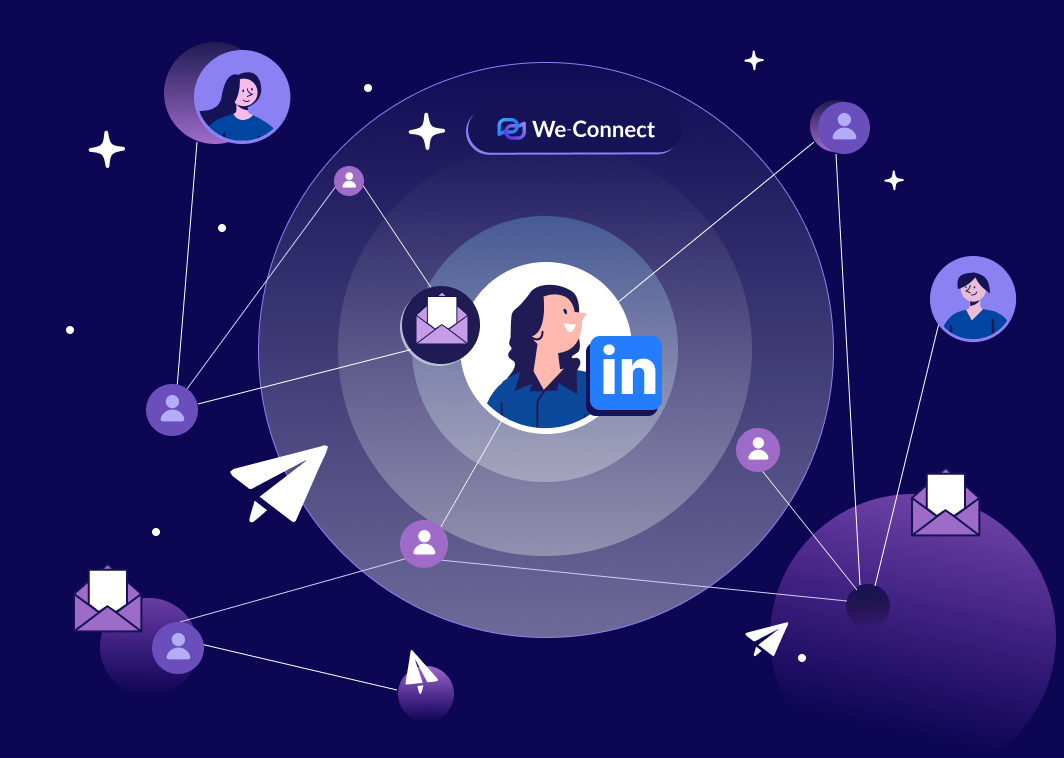When it comes to LinkedIn, a high acceptance rate is more than just a number—it’s your key to unlocking meaningful connections and career opportunities. Instead of “spray and pray,” focusing on a high acceptance rate signals to LinkedIn (and your network) that you’re a credible, valuable contact. Whether your goal is recruiting, business development, or personal growth, a higher acceptance rate sets you up for lasting success.
But why does it matter? A high acceptance rate helps you avoid LinkedIn restrictions, builds trust by showing you’re a well-connected professional, and maximizes your content’s impact on the platform. With each accepted request, you’re creating a network that not only opens doors but also amplifies your voice. Let’s explore why improving your acceptance rate matters—and how to get started.
Why Does a High Acceptance Rate Matter?
Sure, the spray and pray method ‘works,’ but it won’t get you the transformative results you’re looking for. Whether you’re focused on recruiting, business development, brand building, or professional growth, your acceptance rate has a significant impact on your results.
Here are a few compelling reasons why you should start caring about your acceptance rate:
1. Minimizes the Risk of Account Restrictions
LinkedIn monitors the acceptance rate of connection requests to gauge whether users are spamming or connecting indiscriminately. A consistently low acceptance rate (as well as too many contacts clicking ‘I don’t know this person’) may trigger LinkedIn to impose a temporary restriction on your account.
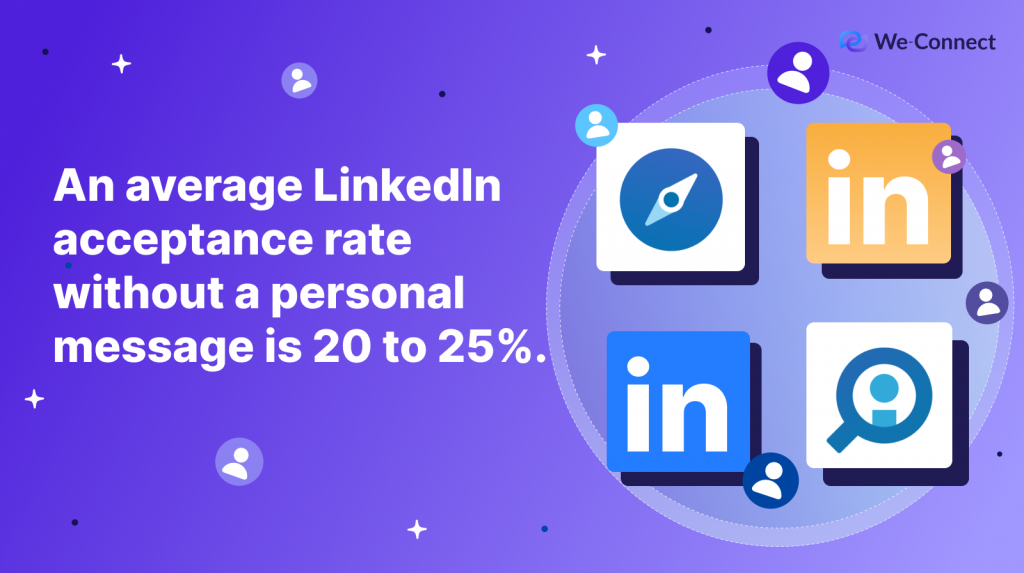
2. Builds Credibility and Trust
A well-connected profile enhances your credibility. While it’s a bit superficial, potential clients, collaborators, or employers see a high number of connections as social proof that you’re a valuable contact.
3. Boosts Your Content’s Impact
If you’re active on LinkedIn by sharing posts (which you should be!), a larger, relevant network means your content will be seen by more people who find it valuable. This can lead to higher engagement on your content as well, translating to more profile views and more followers as you continue to scale your growth.
4. Facilitates Business and Career Growth
LinkedIn connections can directly impact your career or business growth. Whether you’re looking to generate leads, explore career opportunities, or scale your personal brand, a high acceptance rate helps you build a diverse network that supports and opens doors.
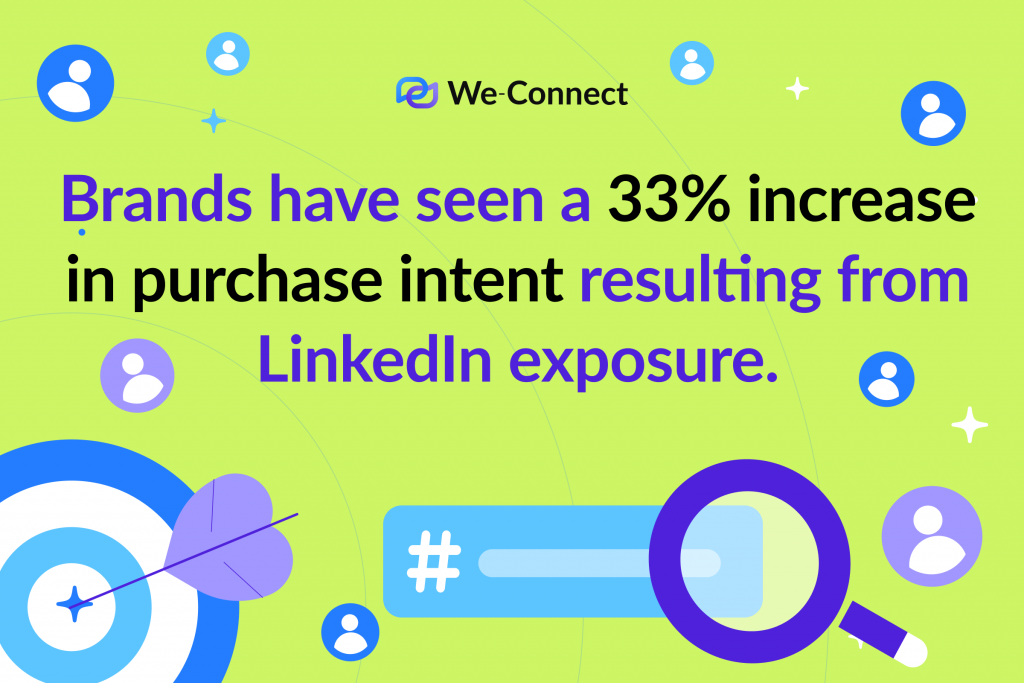
How Can You Improve Your LinkedIn Connection Rate?
It can be hard to pin down the reason why a contact accepts or declines your connection request. That being said, there are a few best practices that can help turn around the efforts of a low rate. Here’s what we recommend:
1. Start with a Polished, Professional Headshot
First impressions are everything, and when it comes to a connection request, your profile photo is the very first impression you’ll make. Upon opening the ‘My Network’ tab of LinkedIn (where users accept/decline connection requests), a user only sees three things: your connection request message, LinkedIn headline, and your profile photo.
A clean, well-composed headshot not only gives you credibility but also makes you look approachable. Aim for a high-quality image that communicates confidence and professionalism. Avoid busy backgrounds and selfies; instead, opt for a simple background taken by a third party.
2. Personalize Your Connection Request with a Thoughtful Note
A personal note is a powerful way to grab attention and communicate your purpose for reaching out. When sending a connection request, LinkedIn allows up to 300 characters for a note, so you’ll have to make each word count.
A well-crafted message could look something like this:
“Hi [Name], I’ve been following your work at [Company Name] and would love to connect to chat more. I’m also working in [Industry] and believe a connection could be mutually beneficial!”
Avoid generic phrases like “I’d like to add you to my network” and focus on creating a genuine connection by referencing a shared interest or mutual contact.
Extra Tip: If you’re reaching out to a broad group of professionals in your field, save multiple message templates for different types of connections. Tailoring your approach for each audience segment can make a big difference in acceptance rates.
3. Write an Engaging Profile Headline That Highlights Your Value Proposition
Your LinkedIn headline is the text that appears directly below your name and is one of the first things people see when they visit your profile. As mentioned, it’s also one of the few things shown alongside your connection request. With 120 characters, this is your opportunity to communicate the value you bring as a connection on LinkedIn. Go beyond your job title by describing what you do and the benefits you provide.
For example:
- Instead of “Marketing Specialist,” say something like “I help brands craft impactful, results-driven marketing campaigns.”
- Instead of “Sales Manager,” consider “Sales Manager | Growing client relationships and driving revenue in the tech space.”
Quick Tip: Browse other profiles in your industry and look for phrases that resonate with you. Adapt them to reflect your unique value, positioning yourself as someone people would want to connect with.
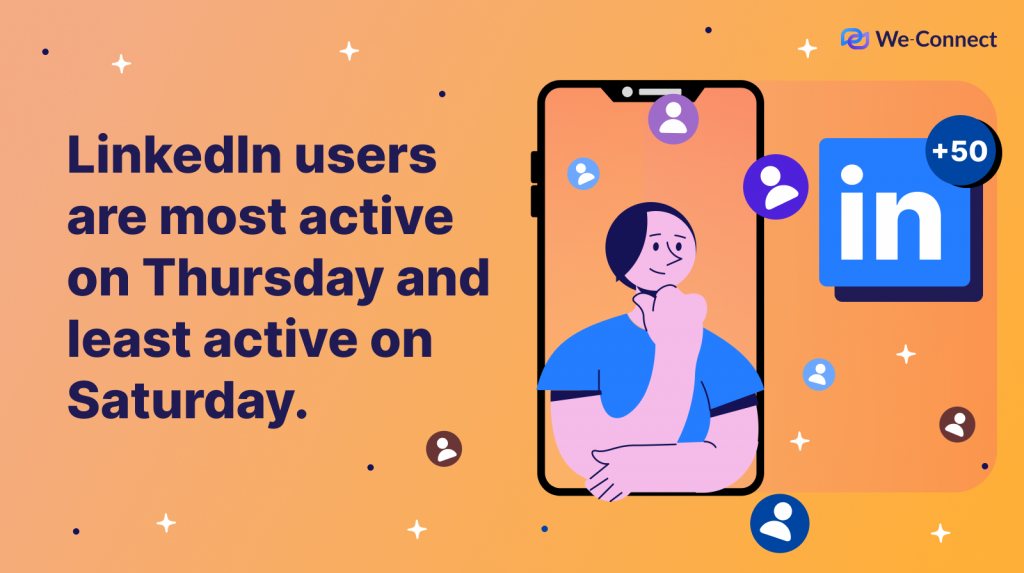
4. Craft a Captivating Profile Summary
Your profile summary is your chance to give potential connections a deeper sense of who you are and what you bring to the table. Think of this space as a way to share your story—highlight your skills, experiences, and what makes you unique. Your LinkedIn summary can be 2,000 characters, so take your time to create a well-rounded, interesting summary that reads like a conversation rather than a resume.
Suggested Format:
- Introduction: Briefly introduce yourself and your professional role.
- Experience and Skills: Highlight key experiences or accomplishments that set you apart.
- Your Value: Explain what you bring to connections or clients.
- A Personal Touch: Mention a hobby or interest if it fits naturally—this can make you more relatable.
Example:
“As a digital marketing professional with over five years of experience, I’ve had the privilege of helping brands create data-driven strategies that foster authentic customer engagement. My background in analytics and creative content allows me to balance strategy with execution, making marketing campaigns that truly resonate. Outside of work, I’m passionate about sustainable business practices and always up for a discussion about the latest trends in green tech!”
5. Target the Right People
A high acceptance rate often comes down to reaching out to the right audience. Think carefully about the type of professionals who would be most likely to accept your request and benefit from connecting with you. For instance, if you’re in sales or marketing, it would be a good use of your time to sit down and dream-up your ideal customer profile–a picture of the contacts that fit perfectly into your buyer personas.
How can you target the right people on LinkedIn?
- Use LinkedIn’s Filters: Leverage LinkedIn’s search filters to narrow your search by industry, title, and location.
- Focus on Mutual Connections: Prioritize connections with mutual contacts to build trust and increase acceptance rates.
- Engage Before Sending Requests: Interact with target profiles by liking or commenting on their posts to boost familiarity.
- Look for Shared Groups or Interests: Connect with members of LinkedIn groups that align with your industry or interests.
- Research Key Companies and Decision-Makers: Identify relevant decision-makers in target companies to make your outreach more strategic.
- Analyze and Refine Your Approach: Regularly assess acceptance rates and adjust targeting for better results.
Pro Tip: If you don’t have Sales Navigator, you can still use LinkedIn’s free search filters to target people based on job title, industry, and shared connections. Reaching out to “2nd-degree” connections (those who have mutual connections with you) can also improve acceptance rates.
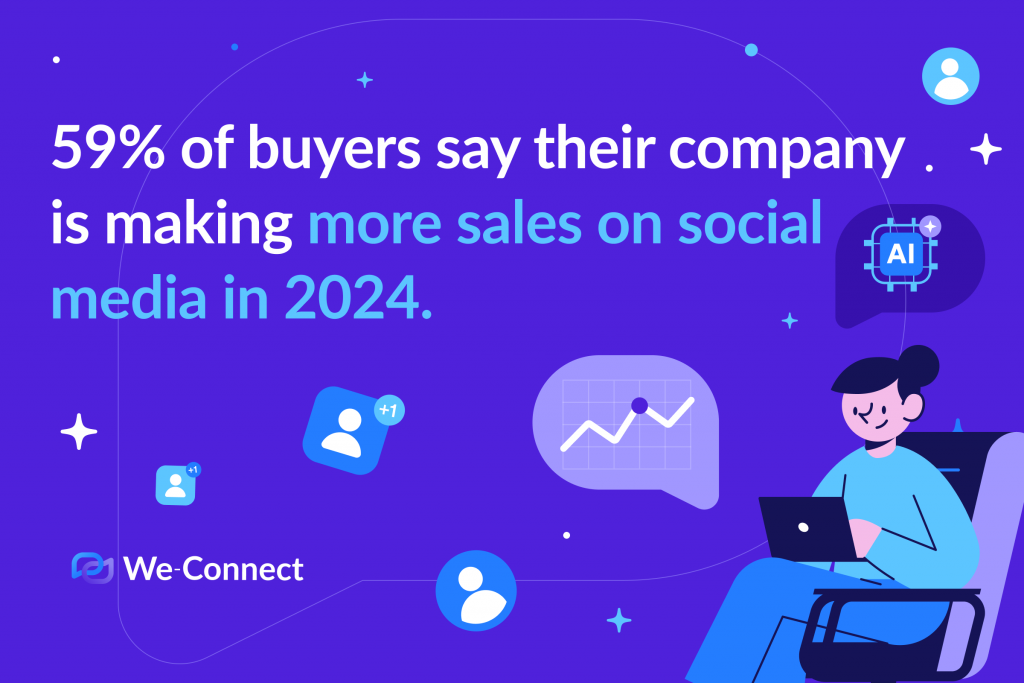
6. Add Relevant Skills to Showcase Your Expertise
Your LinkedIn skills section allows you to highlight specific areas of expertise. By listing relevant skills, you reinforce your professional identity and help connections understand what you’re proficient in. Make sure to list skills relevant to your target connections and consider endorsing others’ skills as a way to encourage reciprocation.
How to Do It: LinkedIn lets you add up to 50 skills, so choose the ones that best represent your expertise and are aligned with your industry.
Bonus: If you have taken any LinkedIn skill assessments, adding them to your account will show a verified skill badge, which can also make your profile more appealing to potential connections.
7. Request and Showcase Recommendations
Recommendations are powerful social proof. A few genuine, well-written recommendations from colleagues, managers, or clients can significantly boost your credibility on LinkedIn.
Think about it like this: you wouldn’t go to a restaurant without reviews, so why would you form professional relationships without them? People are more likely to connect with someone who is vouched for by others.
Pro Tip: Reach out to people you’ve worked with closely and ask for a recommendation. A polite message explaining why their feedback would be valuable can help make the request feel genuine and reciprocated.
8. Engage with Content to Boost Visibility
Building connections on LinkedIn isn’t just about sending requests; it’s also about being active. Regularly posting valuable content and commenting thoughtfully on others’ posts can make you more visible to potential connections. When you’re active, people may recognize your name and be more inclined to accept your invitation.
Quick Engagement Tips:
- Like and comment on posts from thought leaders/influencers in your field.
- Share articles related to your industry with your network (or via DM).
- Publish posts about trends, observations, professional experiences, or anything that connects with your audience.

Final Thoughts
Increasing your LinkedIn acceptance rate isn’t about sending more requests—it’s about making strategic, personalized outreach that appeals to the right people. By crafting a strong profile, engaging genuinely, and taking a thoughtful approach, you’ll create a network that supports your growth.
Happy connecting!
